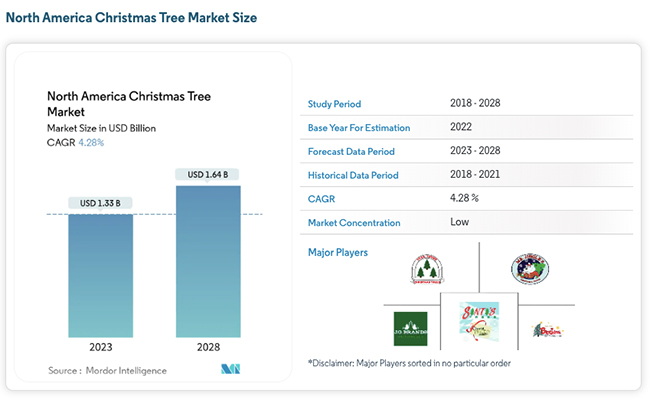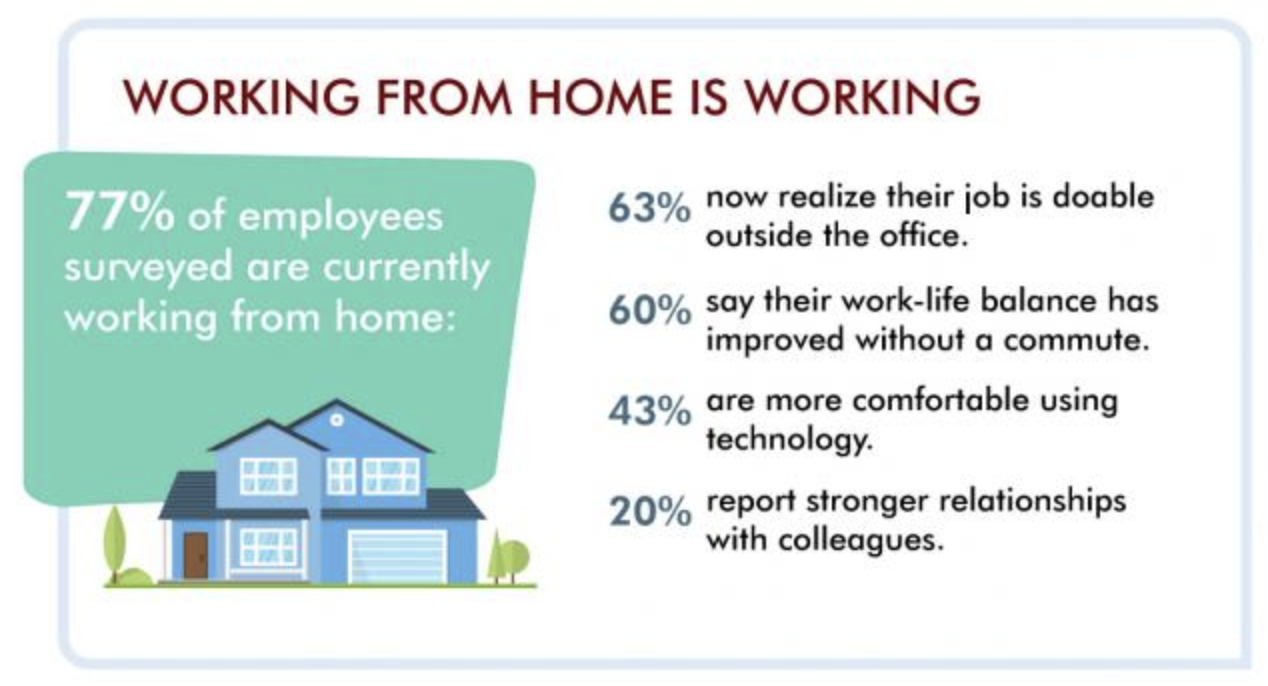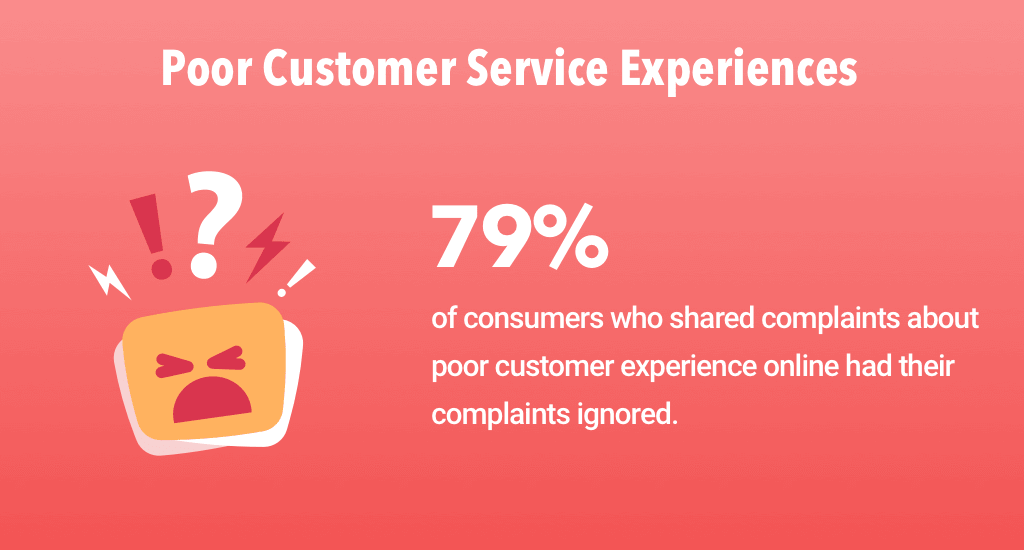Starting your own Christmas tree farm can be a jolly way to generate income. The estimated compound annual growth rate (CAGR) of the global Christmas tree market is 4.33% from 2022 to 2030. This means the market could reach $7.94 billion by 2030.

With demand growing for fresh-cut trees and little product differentiation, a Christmas tree farm can produce evergreen profits. From the first soil test to determining how much land you need, there are many factors to consider when purchasing a farm for Christmas trees.
This guide covers how to start a Christmas tree farm. You’ll discover essentials like sourcing equipment, market research, and registering your EIN.
1. Conduct Christmas Tree Farm Market Research
Thorough market research is critical when launching any new business, and Christmas tree farms are no exception. The first step is identifying overall industry growth trends.

Analyze market demand factors in your local area for Christmas trees. Government census data provides demographic statistics to determine the number and type of households that are likely to purchase real trees. Average income levels indicate how much families can spend.
Competitor research examines existing Christmas tree farming or retail lots selling pre-cut trees in your intended geographic area. Drive the locations to observe lot displays, tree types and sizes, pricing, and customer volume. This provides real-world insight into customer preferences that can inform your offerings.
Interviewing potential buyers is also invaluable. Ask friends and neighbors what they look for in companies growing Christmas trees. Would they prefer to cut their tree from a Christmas tree farmer or buy a pre-cut one? What specific tree varieties or sizes do they want? How much are they willing to spend? Feedback will steer your business plan.
Also, look at what Christmas tree species are most popular. It helps to examine local competitors selling Christmas trees to see if pine trees, fir trees, balsam fir, Colorado blue spruce, or other trees are leading in popularity.
Land availability and cost to either buy or lease acreage is a key consideration. You’ll need at least 10 acres to rotate tree harvesting, with more acreage supporting higher volume. The land itself should have an appropriate slope, soil nutrition, and drainage.
2. Analyze the Competition
Carefully scrutinizing your competition is imperative when launching a Christmas tree farm, whether you plan to sell direct-to-consumer or wholesale. For brick-and-mortar competition, identify all choose-and-cut farms and retail lots selling pre-cut trees within a 20-mile radius of your prospective location.
Visit each competitor during the holiday season to gather key observational data. Evaluate their lot displays, tree types, and sizes, pricing structure, customer traffic flow, and volume. Talk to customers about what they like and dislike to find gaps in service quality. Ask what they use in weed control and air drainage.
Research background details on each farm and lot online too. How long have they been in business? Do they sell other products like wreaths and garlands? What varieties do they grow? Is their operation wholesale, retail, or agritourism-focused? Any certifications for sustainable or organic farming practices? This provides helpful context.
Evaluate the competition’s digital presence as well. Search engines, social media, and small business review platforms shape today’s marketplace. Conduct Google searches to see their search engine rankings and online visibility.
Check Facebook and Instagram for follower counts and customer engagement. Read through online reviews on Yelp, TripAdvisor, or industry-specific sites to understand customer perspectives.
Analytics tools like SEMrush and SpyFu also uncover valuable competitive intelligence. You can see your rivals’ web traffic sources, search rankings, PPC ads, best-converting keywords, and more. Use these insights to forge your online strategy with the greatest chance for success.
3. Costs to Start a Christmas Tree Farm Business
Christmas tree plantation establishing requires significant upfront capital investment, with ongoing operating expenses annually. Carefully projecting costs is crucial to determine profit potential and secure financing.
Start-up Costs
- Land prices vary dramatically based on location. 10 acres of vacant rural land can range from around $100,000 to $500,000.
- Leasing agricultural land typically costs $100 to $500 per acre annually.
- Clearing brush, tilling soil, leveling, road construction, and installing irrigation and drainage systems average around $2,500 per acre.
- A 10-acre farm would incur about $25,000 in site development costs.
- Used equipment can reduce costs, but buying new will still total around $80,000 for a starter set.
- Proper storage facilities like barns, sheds, or greenhouses average $15 to $30 per square foot.
- Plan to plant roughly 700-1,000 trees per acre. Seedlings cost $1 to $4 each based on the species and saplings with at least 2 years of growth run $10 to $40.
- For 10 acres with 1,000 trees per acre, saplings would cost $100,000 to $400,000 assuming a higher-end $40 per tree average.
- Incorporation fees and business licensing: $500-$2,000
- Accounting and legal services: $2,000 – $5,000
- Insurance policies: $2,000 – $10,000 annually
- Website development and marketing assets: $3,000 initially
Ongoing Costs
Ongoing operating expenses must be funded as well:
- Labor for planting, pruning, pest management, and harvesting: $15-$25 hourly with potential overtime during peak season. Two full-time employees per 10 acres are recommended.
- Gas and supplies for maintenance equipment: $5,000+ annually
- Water usage costs for irrigation
- Electric, internet, and phone services
- Periodic soil testing and fertilization: $30 per acre
- Property taxes and equipment insurance premiums
- Marketing and advertising costs to promote retail sales
Start-up costs for a baseline 10-acre Christmas tree farm can easily exceed $250,000. Ongoing overhead then reduces profit margins, making comprehensive financial planning a necessity.
4. Form a Legal Business Entity
Structuring your Christmas tree farm into a formal business entity is important for liability protection and tax implications. The four main options—sole proprietorship, partnership, corporation, or LLC—have pros and cons to weigh.
Sole Proprietorship
A sole proprietorship is the simplest structure with no formal registration needed. You own and operate the tree farm directly. Income and losses flow through to your tax return. This offers ease of management and paperwork. But it also exposes your assets to any legal or debt issues the farm encounters.
Partnership
Forming a general partnership shares ownership and management duties between two or more people. You still bypass corporate taxes and pass gains/losses to personal returns. However, partnerships can get complicated with profit-sharing ratios and decision-making rules. And each partner’s assets remain at risk.
Corporation
A corporation designates the business as a separate legal entity from its owners. Shareholder investments buy stock to fund operations. Corporate taxes apply on company profits first, then shareholders pay taxes on any dividends. The corporate structure limits financial liability but involves more complex registration, record-keeping, and reporting rules.
Limited Liability Company (LLC)
An LLC (Limited Liability Company) combines aspects of partnerships and corporations. It designs the Christmas tree farm as a distinct legal entity to limit financial liability, like a corporation. But company profits and losses pass through to the owners’ tax returns, similar to a partnership. Ownership splits into percentages, with an operating agreement governing decisions.
5. Register Your Business For Taxes
Before you start your land purchase and site preparation, you need to register for taxes. All Christmas tree farm businesses must register for tax compliance at both state and federal levels. This requires obtaining an EIN (Employer Identification Number) and sales tax permits.
An EIN establishes your business identity with the IRS for federal tax purposes. It acts like a social security number specifically for your company. This EIN gets used for payroll taxes, opening business bank accounts, licensing applications, tax filings, and more.
Applying online at IRS.gov takes just minutes. You’ll need to provide basic information about your tree farm business structure and ownership details. The IRS EIN Assistant tool guides you through a series of simple questions to apply.
Your state revenue or taxation department has additional licensing and reporting requirements related to sales tax. Visit their website to complete new business registration and apply for state tax IDs. Fees range from $10 to $100 annually.
Any Christmas tree sales—whether wholesale, retail lot customers, or choose-and-cut farm visitors—incur sales tax. You must collect this from customers on qualifying transactions and submit payments to the state. Quarterly sales tax filings report your total taxable sales and associated tax dollars owed.
6. Setup Your Accounting
Robust financial processes are vital for Christmas tree farm success and IRS compliance. From tracking income and expenses to quarterly taxes to year-end reporting, proper accounting principles apply.
Accounting Software
Cloud-based accounting platforms like QuickBooks sync with business bank/credit card accounts to automatically import revenue, and costs, and categorize transactions. This condenses manual data entry and reconciliation busy work. You gain real-time visibility into cash flow, and project earnings, and generate a full slate of financial statements quickly.
Hire an Accountant
While software handles much of the routine accounting work, partnering with an accountant offers an invaluable second set of eyes. They ensure proper classification of farm investments versus ongoing operational expenses. An accountant also keeps your tax liability minimized through savvy filing and deductions guidance.
Open a Business Bank Account and Credit Card
Be sure to establish a dedicated business checking account and credit card right away too. Never commingle personal and farm finances. Clean separation gives transparency into what the enterprise earns versus your household. It also enables building credit history specifically for the company.
Keep detailed records covering every transaction related to the Christmas tree operation. Lean on software and an accountant to control the numbers so you can focus on growing your perfect holiday evergreens.
7. Obtain Licenses and Permits
Before selling your first Fraser fir, properly licensing your Christmas tree farm business is mandatory. Find federal license information through the U.S. Small Business Administration. The SBA also offers a local search tool for state and city requirements.
At the local level, many counties or townships dictate rules on allowable land use within residential or commercial zones. Seek approval from planning departments or permit offices related to operating a farm. Application fees often apply based on acreage or intended activity.
Your state’s Department of Agriculture regulates registration requirements for legitimate farming. Applications involve submitting details on Christmas tree acreage, operations plans, vehicle/equipment roster, and more. Upon approval, the agency issues a growing license number that acts as formal verification for wholesale nursery transactions.
If selling direct-to-consumer whether choose-and-cut or pre-cut, further permits related to commerce may be necessary. State or county health departments want assurance retail food service standards are met if serving refreshments. Department of Revenue oversight applies regarding sales tax collection and reporting for any retail or agritourism sales.
8. Get Business Insurance
Business insurance shields Christmas tree farm owners against unexpected liabilities that could otherwise bankrupt the operation. Various policies offset the financial risks inherent with any agricultural endeavor involving heavy equipment, retail sales, and on-site labor.
Imagining a few scenarios illustrates the financial perils. A tractor-trailer delivering seedlings crashes into a customer’s car on your property, triggering a $50,000 insurance claim. An icy parking lot causes a visitor to break their leg and sue the farm for $75,000 in damages. A pruning employee accidentally cuts his hand requiring surgery and weeks of lost wages, $15,000 workers compensation settlement.
General liability insurance covers costs if customers ever sue for personal injury or property damage claims. Product liability protects against lawsuit costs too if a tree you sell is deemed hazardous. Commercial auto policies extend collision, comprehensive, and liability insurance to all farm vehicles.
Workers’ compensation insurance handles lost wages, medical bills, and rehabilitation for any employee injuries. For severely injured staffers, lifetime costs can exceed $1 million making this mandatory in most states. Flood insurance and hail insurance help recoup crop investment losses as well since weather damage is unpredictable.
9. Create an Office Space
Rather than constantly working from a cold barn or home kitchen table, designating a proper office space helps manage Christmas tree farm operations efficiently. Dedicated infrastructure offers shelter for crucial tasks like bookkeeping, vendor calls, marketing efforts, and employee training.

Home Office
A basic home office works for nascent farms, converting a spare room into an equipped command center. Expect costs around $2,000 to $4,000 furnishing the space with a computer, printer, filing cabinets, office supplies, and the required percentage of internet/utility expenses.
Coworking Office
As the business scales, a coworking space like WeWork offers professional infrastructure without huge upfront commitments. Open floorplans allow flexible seating arrangements. You also gain access to shared administrative resources like printers, scanners, and conference rooms.
On-Site Office
Established farms with retail components could justify adding an office directly in the farm stand barn or store to interface with customers. Expect buildout expenses between $3,000 to $10,000 outfitting walls, floors, lighting, and furniture appropriately.
Commercial Office
For larger wholesale enterprises supplying big chain stores annually, leasing Class A office space in a commercial building provides executive digs to meet high-level buyers. Expect leases at $25 per square foot in rural areas or $40 in major metros.
10. Source Your Equipment
A roster of specialized vehicles and equipment keeps Christmas tree farm operations running. Analyze the merits of buying new, used, or rented options when acquiring essential gear. Online marketplaces also offer access to deals.
Buy New
Purchase pricing for new tractors, plows, planters, sprayers, balers, and other agricultural implements ranges widely. Base models may only cost several thousand dollars whereas advanced GPS-guided machinery with climate control cabins can exceed $100,000. New equipment does warranty assurance but loses significant value immediately.
Buy Used
The used market provides major savings on equipment in reliable shape. Models are often gently used by small family farms trading up or retiring. Facebook Marketplace and Craigslist list nearby offerings searchable by zip code and item specifics. Auction sites like AuctionTime compile national listings as well. Also, check local dealers’ websites advertising trade-ins.
Rent or Lease
Renting or leasing some specialty seasonal implements reduces unnecessary storage between usage. For example, renting an expensive seed drill annually for sapling planting makes sense since it’s only needed periodically. Lease-to-own programs through equipment dealers allow farmers to access cutting-edge gear without huge outlays.
11. Establish Your Brand Assets
Crafting a cohesive brand identity helps Christmas tree farms connect with customers and stand out in the evergreen marketplace. Strategically developing core assets establishes recognition and trust in your offerings.
Get a Business Phone Number
Acquiring a unique phone number via a service like RingCentral gives callers a professional first impression. Portable numbers with custom greetings also enable seamlessly forwarding calls across multiple devices.
Design a Logo
A logo epitomizes the personality of your Christmas tree venture. Consider bright colors and holiday symbols to spark nostalgic cheer. Graphic tools such as Looka Guide create an emblem that resonates across signage, merchandise, websites, and more.
Print Business Cards
Print marketing collateral including brochures, gift certificates, and loyalty punch cards should incorporate brand visuals too for instant familiarity. Scalable solutions from Vistaprint facilitate producing business cards affordably to always have them available for networking and customer encounters.
Get a Domain Name
Secure matching domain names to anchor online assets as well. Namecheap offers domain registration beginning under $20 annually. Once purchased, direct the URL to a full-fledged website showcasing your farm’s offerings and values.
Design a Website
Building a website independently through Wix enables customization but requires learning the platforms. Hiring a freelancer from Fiverr starts at around $500 to handle technical complexities and optimize user experience. This digital space markets seasonal promotions and details sustainable practices.
12. Join Associations and Groups
Plugging into local Christmas tree growing associations, trade groups and online communities accelerates insider knowledge. These entities host collaborative events, share best practices, and provide mentorship opportunities.
Local Associations
The National Christmas Tree Association offers a nationwide network of resources and connections. State-level groups like the California Christmas Tree Association also unite regional growers. Membership fees give access to newsletters, conferences, and industry updates. Events foster exchanging ideas on topics like sustainable land management.
Local Meetups
Tools like Meetup compile area networking events too. Attending annual trade conventions and seminars keeps innovation flowing. Trade shows often feature vendor booths demonstrating the latest equipment and planting/pruning techniques up close. Casual meetups hosted at properties let farmers tour peer farms directly to experience layout optimizations first-hand.
Facebook Groups
Facebook yields targeted communities as well. For example, Real Christmas Tree Farmers and CHRISTMAS TREE FARMS FOR SALE IN THE USA groups unite growers and buyers. Ask questions about transplant beds, best soil PH, soil type, and more. Exchange tips on private nurseries, whether to plant in direct sunlight and more.
13. How to Market a Christmas Tree Farm Business
Implementing marketing across digital and traditional channels helps drive brand visibility and sales for Christmas tree farms. While referrals from delighted past customers offer the highest conversion rates, dedicating energy towards continual outreach and promotions expands your customer base over time.

Personal Networking
Leveraging personal and professional networks jumpstarts word-of-mouth buzz as operations commence. Offer referral rewards like complimentary wreaths to existing customers who share your farm with friends and then purchase Christmas trees. Simple incentives prompt organic evangelism.
Digital Marketing
Digital advertising channels help target broader local audiences actively searching around the holidays too. Consider:
- Google Ads geo-fencing surrounding neighborhoods with keyword and display promotions
- Facebook and Instagram ads spotlighting the variety of Christmas tree availability and retail lot happenings
- Email drip campaigns sharing seasonal care tips and special savings on garlands
- Partnering with weather apps to sponsor local weather alerts driving traffic
- Contest giveaways and social media takeovers teaming up with holiday influencers
Traditional Marketing
Going analog still warrants marketing dollars as well depending on your farm setup and target demographic. Choices like:
- Print ads in parenting magazines and regional newspapers
- Highway billboards along busy holiday travel routes
- Coupon mailers to prior wholesale buyer mailing lists
- Radio spot ads on Christmas music stations
- Flyer distribution at local stores, schools, and churches
Multi-channel recurring touchpoints keep your Christmas tree operation top of mind through the holiday hustle. Monitor performance across efforts to double down on the highest converting platforms.
14. Focus on the Customer
Stellar customer service acts as the cornerstone for prosperous Christmas tree farm operations. Beyond just transactional sales, dedicating genuine care and attention to each visitor or buyer cements loyalty and word-of-mouth referrals.

Imagine a couple that ventures to your choose-and-cut farm yearly with their young children to select the household tree. Greet them by name and reminisce on the twins being babies on their first visit. Recommend a nicely filled-out Douglas fir in the size they typically prefer. You could even ask them what kind of ornaments they’re planning on putting on the tree (candles, transparent ornaments, etc.) so you can make a tree recommendation based on that as well.
For a corporate client purchasing hundreds of wholesale trees for retail lots, customer service involves transparent communication and reliability. Proactively provide updates as weather or demand influences projected harvest timing and volumes.
Extending gracious hospitality and dependable customer service styles families eagerly anticipate returning the next merry season while commercial buyers confidently order from your farm annually, because who doesn’t like surprising their loved ones with nicely wrapped gifts under a beautiful Christmas tree?
